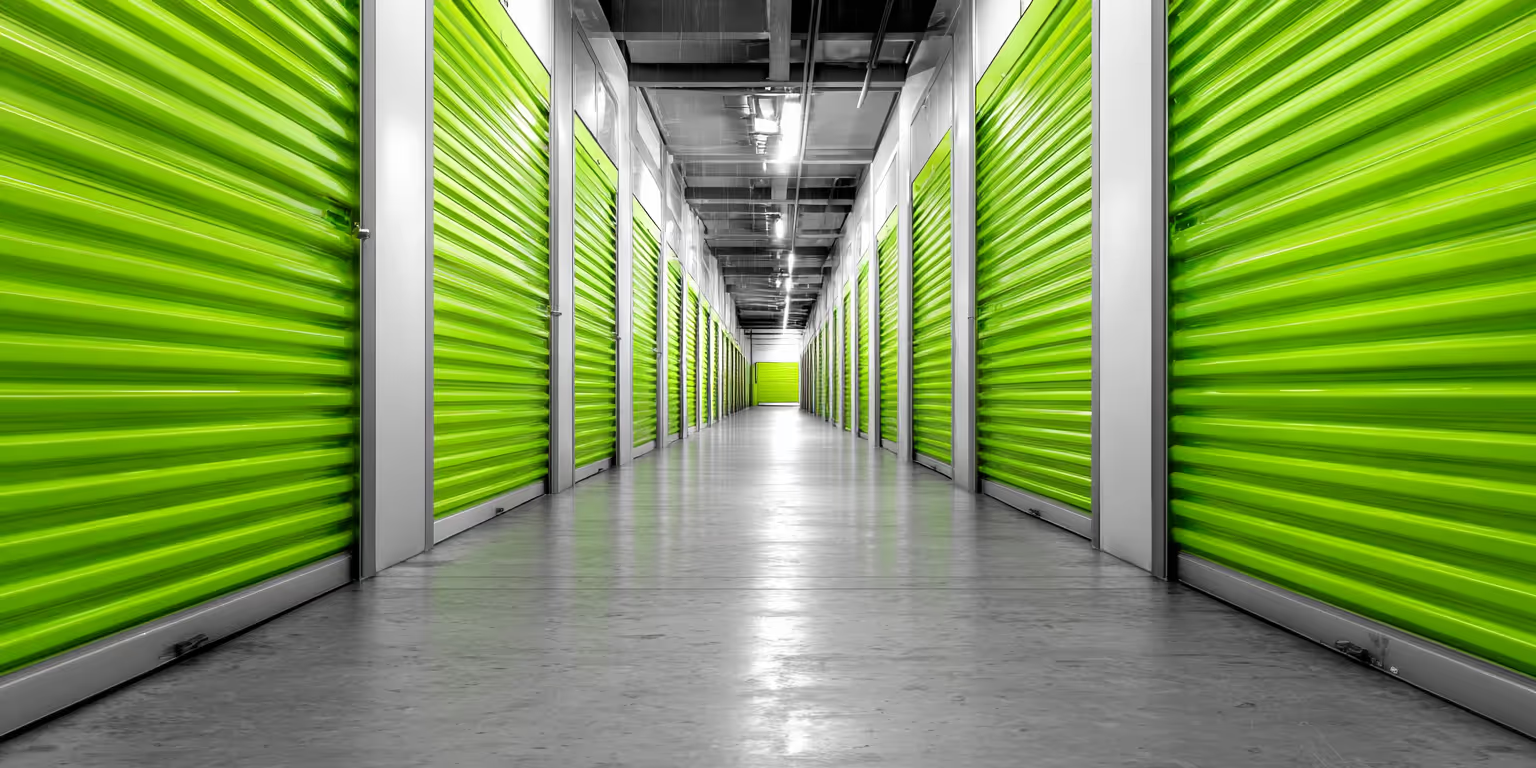Self Storage Automation: Deep Dive
MARKETING

The self-storage industry is rapidly embracing automation and contactless technology to meet modern expectations for convenience and efficiency. Self storage automation – from online rentals and digital access codes to AI-driven security – is transforming how facilities operate and serve customers. In recent years, demand for automated self storage solutions has surged, accelerated by technological advances and the push for contactless services. According to industry data, about 25% of storage operators have already implemented some form of automation at their facilities, and 58% plan to do so, as they look to boost productivity and profitability. This trend reflects a broader shift: renters now expect the speed and ease of digital self-service, while owners seek cost-effective ways to run contactless, efficient facilities.
Early adopters of automation have been able to streamline routine tasks and offer 24/7 services that were once impossible with traditional staffing. The COVID-19 pandemic also played a pivotal role in this shift – it made contactless rentals not only a convenience but a necessity. Many storage operators quickly rolled out online rentals, digital lease signing, and mobile access options to keep both customers and employees. As a result, renters grew accustomed to “hands-off” service and continue to prefer it even as in-person business returns. In short, the rise of automated and contactless self-storage is here to stay, driven by customer preferences and competitive pressure to modernize.
Why Self Storage Automation is Growing
Several factors are fueling the growth of automation in self-storage. Convenience and customer demand top the list. Today’s renters – increasingly millennials and Gen Z – are digital natives who expect to handle everything from unit reservations to payments on their smartphones. They value the flexibility of renting a unit at any hour without needing to visit an office. Walk-in traffic has given way to web and mobile bookings, meaning facilities that offer user-friendly online experiences have a competitive edge. The ability to rent a storage unit online, sign the lease digitally, and gain immediate access via a smart lock or code is becoming a baseline expectation. This demand for instant, 24/7 service is a key reason automation has taken off.
Another driver is operational efficiency and cost control. Automating routine processes – such as bill payment reminders, access control, and even customer inquiries via chatbots – saves managers time and reduces labor costs. Instead of hiring additional staff to cover late hours or multiple locations, owners can deploy technology to handle many tasks. Rising labor shortages and wage costs in many regions make automation especially appealing as an alternative to staffing a facility around the clock. By letting software and machines take care of day-to-day transactions, self-storage businesses can reallocate employee time to higher-value activities like customer service, marketing, or maintaining the property. In essence, automation helps streamline self-storage operations, cut overhead, and minimize human error, all while scaling up service availability.
Contactless technology has also proven to boost customer acquisition and retention. During the pandemic, facilities with contactless rentals attracted tenants wary of face-to-face interactions. Even beyond health concerns, many people simply prefer the speed and ease of self service. They can research, reserve, and move in without coordinating schedules or waiting on staff. This frictionless experience often translates into higher customer satisfaction. For facility owners, adopting automation isn’t just about cutting costs – it’s also a strategy to meet evolving customer expectations and stand out in a crowded market.
Automation Strategies for Urban vs. Rural Facilities
When it comes to self storage automation, one size does not fit all. The effectiveness of automation can depend heavily on a facility’s location and market. Operators are learning that automation priorities shift between urban and rural areas based on different customer needs and operational challenges.
In urban markets, automated self storage features have quickly become a competitive necessity. City facilities tend to serve a younger, tech-savvy customer base that uses digital tools daily and is comfortable with self service technology. These renters often demand conveniences like mobile apps to unlock gates, online account management, and keyless entry to units. High population density and smaller living spaces in cities mean lots of tenants needing access at all hours – whether a startup business owner grabbing inventory late at night or an apartment dweller with an unpredictable schedule. Here, automation’s value is in providing fast, round-the-clock service in a market that never sleeps. Indeed, remotely managed facilities thrive in urban areas where people are used to doing everything via smartphone and expect storage access to be just as seamless.. Features like digital gate codes and 24/7 keycard entry, online rental kiosks in the lobby, and AI-powered security cameras help urban facilities serve customers efficiently without requiring a manager on-site at all times.
In contrast, rural self storage facilities have a different set of priorities and benefits from automation. These locations typically see less walk-in traffic and have customers spread over a wider area, so keeping full-time staff on-site can be impractical or costly. For rural operators, automation is a way to extend service coverage and reduce overhead. For example, installing a self-service kiosk and online rental system ensures that even if a manager isn’t present, a drive-by customer from a far-flung farm can rent a unit and move in on the spot. Such facilities can be managed remotely, with one off-site manager overseeing multiple locations via cameras and software. In fact, rural sites are often ideal candidates for automated management because new rentals are infrequent and hiring staff for extended hours isn’t cost-effective. Technology like remote access control allows a single operator to grant unit access or monitor security from miles away. Moreover, automation enables extended access hours which can be crucial in rural areas – tenants who live far from the facility or work non-traditional hours can still use the facility early or late, without needing an employee to unlock doors. In summary, rural facilities prioritize automation that covers for limited staff and keeps the facility accessible and secure despite lower on-site presence.
Despite these differences, there’s a common lesson for both urban and rural operators: the best automation strategies blend technology with human support. Location aside, no self-storage facility runs on autopilot indefinitely – and successful “automated” facilities recognise the ongoing need for a human touch. Even tech-loving city dwellers appreciate knowing an attentive manager or support person is behind the scenes if an issue arises, and in small communities, personal relationships are often key to business. Automation should therefore work in tandem with skilled staff or call centers rather than replace them outright. Many forward-thinking facilities maintain 24/7 call support or remote managers on standby, ensuring that if a customer has a question, a billing issue, or a problem accessing their unit, help is only a phone call or chat message away.. This safety net builds trust with tenants and addresses the scenarios that technology alone can’t handle.
Industry surveys reinforce that human oversight remains critical in automated self-storage models. For instance, one study found that while 80% of self-storage customers consider digital tools (online booking, mobile apps) important, an even greater 83% say access to good customer service is a deciding factor in where they store.. In other words, technology alone isn’t enough – renters still expect responsive support and a reassuring human presence, even if they rarely interact with staff in person. Likewise, many “unattended” facilities actually have staff remotely monitoring surveillance feeds and system alerts around the clock. They can manage issues across multiple sites, ready to intervene or assist when needed. Smart operators view automation as an enabler, not a replacement, for great customer service. By offloading mundane tasks to machines, their staff are free to focus on higher-level customer care and maintenance, resulting in a better overall experience. The bottom line is that self storage automation works best with a human touch: technology handles the heavy lifting of daily transactions, while trained people provide oversight, personalized assistance, and community connection that keeps customers confident and happy.
Key Technologies Powering Automated Self Storage
Implementing self storage automation involves a combination of hardware and software solutions. Modern facilities are leveraging a range of smart technologies to create a contactless yet secure and user-friendly operation. Here are some of the key technologies enabling the rise of automated storage facilities:
- Alyta’s built-in online rental platform allows customers to find, reserve, and rent units directly from your branded website or mobile interface — no extra integrations required. Tenants can complete lease agreements digitally (with secure electronic signatures) and pay move-in fees or monthly rent through the online portal. This removes paperwork and in-person visits, making the entire rental process 100% contactless. With Alyta, operators expand their reach to customers who shop for storage after hours or from outside the local area, capturing business that would otherwise be missed.
- Access Control: Through Alyta’s access control integrations, facilities can grant tenants secure, automated entry to gates, buildings, and unit doors — without requiring staff on site. Compatible with keypad PIN codes, electronic key fobs, and mobile app-based access (including Bluetooth smart locks), Alyta also supports advanced options like biometric authentication for facilities that want an extra layer of security. Access can be granted or revoked in real time from the Alyta dashboard, and every entry is logged so managers can monitor activity 24/7. For customers, this means convenient, secure access to their belongings any time of day.
- Self-service Kiosks: Alyta integrates seamlessly with self-service kiosks to handle on-site rentals, payments, and ID verification when staff aren’t available. Customers can rent a unit, sign a digital lease, and even purchase a lock in one transaction, with the kiosk guiding them step-by-step. For security, kiosks can be equipped with ID scanners and cameras, and Alyta automatically updates your records in real time when a new rental is completed. Facilities can also offer live help through kiosk video calls connected to a remote manager, ensuring that no rental opportunity is lost due to limited staffing.
- Remote Monitoring: With Alyta’s mobile repsonsive design, customers can open gates or unit doors from their phone, receive instant alerts, and manage their account on the go. On the operator side, Alyta’s dashboard supports remote monitoring, pulling live data from surveillance cameras, IoT sensors, and smart alarms. Advanced security options allow suspicious activity detection and instant alerts, so staff can act immediately — even if they’re managing multiple facilities at once. Alyta centralises all remote oversight tools in one place, making it easier to manage sites efficiently and proactively.
- Automated Billing and Support Systems: Alyta automates billing and payments with scheduled invoices, credit card processing, autopay enrollment, and automatic late fee application. If a payment fails, Alyta triggers reminders and can even integrate with access control to restrict entry until the balance is cleared. For customer support, Alyta offers integrated live chat, ticketing, and chatbot options, giving tenants instant answers to common questions. When the chatbot can’t resolve an issue, it seamlessly escalates to a human support channel, ensuring renters always get help when they need it. This blend of automation and live service means operators deliver a 24/7 support experience without increasing admin workload.
By deploying these technologies, self-storage facilities are becoming more efficient, secure, and customer-centric. Automation minimizes the delays and bottlenecks of manual processes – rentals can happen in minutes online, payments are handled automatically, and access is granted digitally without waiting for a manager to unlock a door.
The Alyta Advantage: By combining online rentals, smart access, self-service kiosks, mobile tools, automated billing, and integrated support into a single platform, Alyta enables self-storage facilities to run smarter, leaner, and more profitably. Even if you only start with one or two features, Alyta’s modular design lets you scale your automation over time — while keeping all operations, data, and customer interactions in one streamlined system.
Embracing a Hybrid Future of Self Storage
As self storage automation continues to rise, it’s clear that the future of the industry is a hybrid one – combining the efficiency of technology with the reassurance of human oversight. Automated and contactless facilities are proving they can deliver convenience, round-the-clock access, and streamlined operations that benefit both renters and owners. From big-city multi-story sites to rural single-owner locations, embracing the right mix of automation can help any storage facility stay competitive in the digital age. It enables renting and accessing units to be as easy as online shopping, meeting the expectations of an increasingly on-demand society.
However, the most successful operators will be those who remember that self storage is ultimately a service business. Personal trust and customer relationships remain core to long-term success. Automation should enhance the customer experience – speeding up processes and eliminating hassles – without sacrificing the personal touch. That might mean having friendly staff available by phone, maintaining a well-kept property that shows human care, or hosting a manager on-site during peak hours to greet customers and handle issues that technology cannot. By synchronizing smart systems with attentive service, facilities can have the best of both worlds: a highly efficient, automated self storage operation that still feels welcoming and responsive.
In conclusion, self storage automation is not about removing humans from the equation, but empowering both customers and staff through intelligent tools. Facilities that tailor their automation strategy to their market – urban or rural – and integrate it with dependable human support are seeing the greatest payoff. They enjoy lower costs and greater flexibility, while tenants get hassle-free, secure storage on their own terms. The rise of contactless, efficient facilities is transforming self-storage for the better, and it’s a trend that shows no sign of slowing down. Adopting automation now, in a thoughtful and customer-centric way, will position storage businesses to thrive in this new era of convenience. Those who innovate while keeping a human touch in the loop are set to lead the industry as it evolves toward an ever more high-tech, service-rich future.



